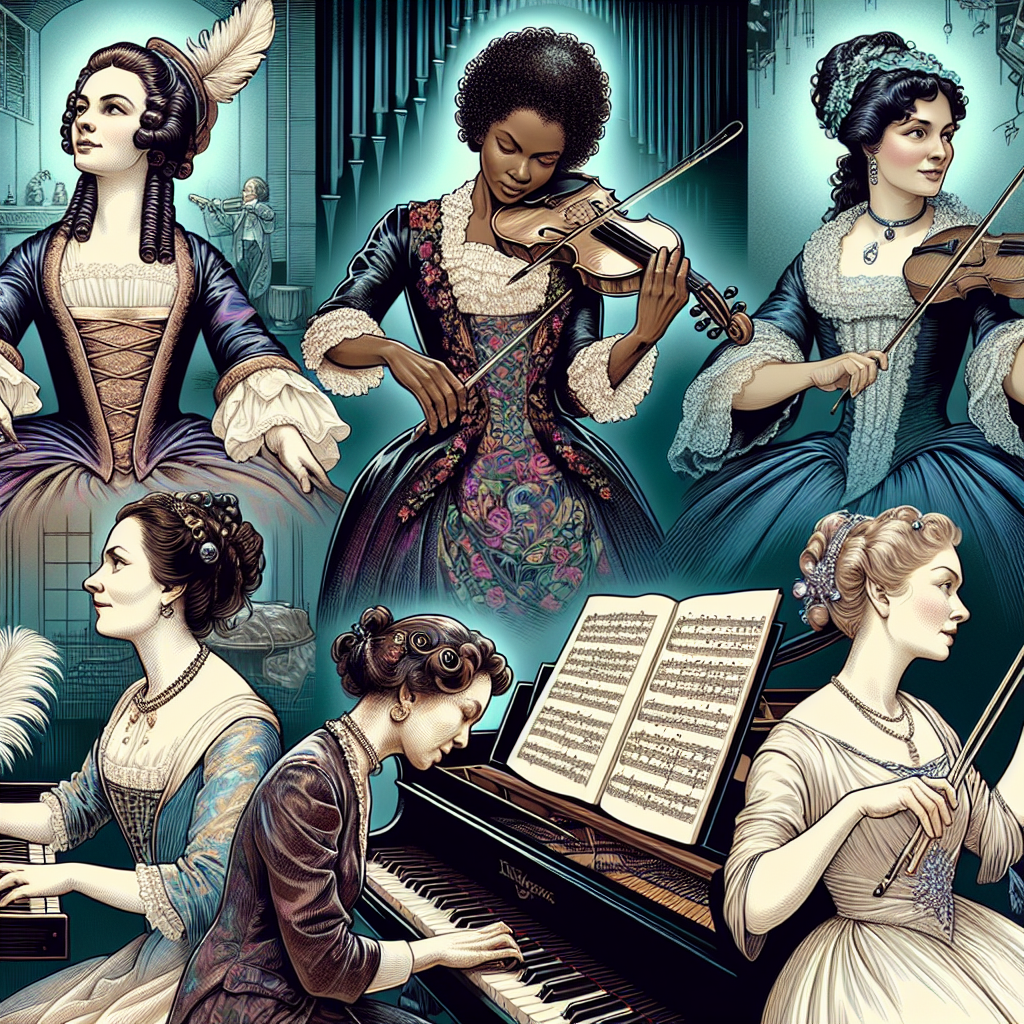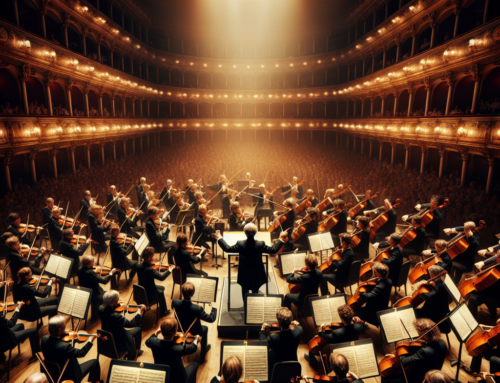“Harmonizing History: Celebrating the Unsung Women Composers Who Reshaped Classical Music”
Introduction
Throughout history, many women composers have made significant contributions to classical music, often without receiving the recognition they deserved. These unsung heroines of music faced numerous challenges, including societal restrictions and limited access to formal training and public performances. Despite these obstacles, they composed works that pushed the boundaries of musical form and expression. From the Baroque period to the 20th century, women like Barbara Strozzi, Fanny Mendelssohn, Clara Schumann, and Florence Price wrote music that enriched the classical repertoire, influencing their contemporaries and generations of composers to come. Their resilience and creativity helped pave the way for future women in music, gradually transforming a predominantly male-dominated field.
The Life and Legacy of Florence Price: America’s First Black Woman Composer
Florence Price holds a distinguished place in the annals of classical music as America’s first Black woman composer to gain national recognition. Her journey, marked by both profound challenges and groundbreaking achievements, offers a rich narrative of resilience and creativity that continues to inspire musicians and composers today.
Born in 1887 in Little Rock, Arkansas, Florence Beatrice Price was a musical prodigy from an early age. Despite the racial prejudices and societal constraints of her time, Price pursued her passion for music relentlessly. She attended the New England Conservatory, one of the few institutions that admitted African Americans, where she majored in piano and organ. To avoid racial discrimination, Price listed her hometown as Pueblo, Mexico, a testament to the lengths she had to go to pursue her education.
After graduating, Price returned to the South, where she worked as a teacher and eventually settled in Chicago during the Great Migration. It was in Chicago that her career as a composer began to flourish. The city’s vibrant cultural scene, along with the support of its thriving Black community, provided Price with the fertile ground she needed to grow her talents. She composed numerous works during this period, including symphonies, concertos, choral compositions, and songs, which were performed by leading orchestras and soloists of the day.
Price’s breakthrough came in 1933 when her Symphony in E Minor won the prestigious Wanamaker Contest and was subsequently performed by the Chicago Symphony Orchestra. This historic concert marked the first time a major American orchestra had performed a piece written by an African American woman. The symphony’s blend of traditional European forms with African American spirituals and melodies was revolutionary, showcasing Price’s unique ability to synthesize different musical traditions into a cohesive and compelling whole.
Despite her success, Price’s work was often marginalized during her lifetime, and many of her compositions remained unpublished and unperformed. However, the revival of interest in her music in recent years has led to a reevaluation of her contribution to classical music. Scholars and musicians are now rediscovering Price’s extensive catalog, bringing her long-overlooked compositions back into the public eye.
Price’s legacy extends beyond her compositions. She paved the way for future generations of African American musicians and composers, breaking barriers and challenging the status quo. Her perseverance in the face of adversity and her commitment to her art make her a seminal figure in the history of American music.
Today, Florence Price is celebrated not only for her musical genius but also for her role as a trailblazer who opened doors for others who followed. Her life and work stand as a powerful testament to the enduring spirit of creativity and the unyielding pursuit of one’s dreams, regardless of the obstacles encountered along the way.
As we continue to explore and perform Florence Price’s music, we not only honor her legacy but also enrich our understanding of the American musical landscape. Her compositions, imbued with beauty and depth, remind us of the power of music to transcend boundaries and to speak to the universal human experience. In celebrating Florence Price, we recognize the contributions of all unsung women composers who have shaped classical music with their innovation and vision.
Exploring the Works of Grażyna Bacewicz: Poland’s Pioneering Composer and Violinist

Grażyna Bacewicz stands as a towering figure in the world of classical music, not just in her native Poland but globally, yet her contributions are often overshadowed in the broader historical narrative. As a composer and violinist, Bacewicz infused her works with a unique blend of vigor and sensitivity, navigating a path that many women in her time found impassable. Her story and her music offer a fascinating glimpse into the life of a woman who was not only a creative genius but also a trailblazer in a male-dominated field.
Born in 1909 in Łódź, Poland, Bacewicz was a prodigy who excelled in both violin and composition from a young age. Her talents were nurtured in an environment that, while supportive, was also fraught with the challenges of a Europe in turmoil. Despite these obstacles, she pursued her education fervently, studying at the Warsaw Conservatory and later at the prestigious Ecole Normale de Musique in Paris. It was in Paris where she studied under the legendary Nadia Boulanger, whose mentorship was pivotal in shaping young composers, including Bacewicz.
Bacewicz’s return to Poland marked the beginning of a prolific period in her career. She served as a concertmaster of the Polish Radio Symphony Orchestra, a rare position for a woman at the time, which she balanced with her creative pursuits. Her compositions during this period began to reflect a deepening maturity, weaving intricate Polish folk motifs with contemporary classical techniques. This synthesis not only highlighted her technical prowess but also her deep love and understanding of her cultural heritage.
Moreover, Bacewicz’s resilience during World War II and the subsequent Soviet influence on Poland is particularly noteworthy. Despite the oppressive political climate, which often dictated artistic expression, she continued to compose, perform, and even expand her musical language. Her ability to adapt and innovate under such conditions was nothing short of remarkable. Works like her Second Symphony and her Quartet for Four Violins not only survived these harsh conditions but thrived, being celebrated both in Poland and abroad.
Transitioning into the post-war era, Bacewicz did not slow down. Instead, she explored new realms of musical expression, delving into orchestral textures and forms that were avant-garde yet accessible. Her music from this period, including the much-acclaimed Fourth Symphony, displayed a mastery of orchestration and an evolution in harmonic structure, which positioned her as a leading figure in contemporary classical music.
Bacewicz’s legacy is not merely in her compositions but also in her role as a mentor and advocate for future generations of musicians, particularly women. Her career paved the way for many who saw in her a model of artistic integrity and independence. Today, as we revisit her extensive body of work, from intimate chamber pieces to robust orchestral works, we find a treasure trove of musical brilliance that continues to inspire and influence.
In conclusion, Grażyna Bacewicz’s journey as a composer and violinist is a testament to her indomitable spirit and immense talent. Her contributions to classical music are profound, embodying the essence of innovation and expression. As we celebrate unsung heroes in music history, Bacewicz’s story is a beacon of inspiration, reminding us of the power of perseverance and the enduring impact of one woman’s musical vision. Her legacy not only enriches our understanding of classical music but also challenges us to recognize and elevate the many voices that have shaped its course.
The Musical Innovations of Louise Farrenc: A Trailblazer in 19th Century French Music
Louise Farrenc may not be a household name when we talk about classical music, but her contributions and innovations have significantly shaped the landscape of 19th-century French music. Born in 1804 in Paris, Farrenc was a prodigious talent from a young age, and her journey through the male-dominated world of classical music is not just inspiring but also a testament to her resilience and passion for her craft.
Farrenc’s musical education was comprehensive, studying piano with illustrious teachers and composition under Anton Reicha, a respected composer and contemporary of Beethoven. Despite the societal norms of her time, which often limited women’s roles in the arts to that of performers rather than creators, Farrenc broke through these barriers, establishing herself as a formidable composer and pianist.
What sets Louise Farrenc apart is not just her ability to compose in a time when it was almost unheard of for women to do so, but also her innovative approach to the symphonic form and chamber music. Her compositions, which include symphonies, piano works, and chamber pieces, are celebrated for their intricate craftsmanship and lyrical beauty. Farrenc’s music blends the clarity and structured forms of Classical traditions with the emotional depth and expressive nuances of the Romantic era, creating a unique sound that was both ahead of its time and deeply reflective of her own artistic voice.
One of Farrenc’s most significant contributions to classical music was her ability to infuse her compositions with a robust, symphonic quality that was often reserved for her male counterparts. Her Third Symphony in G minor, for instance, is a powerful work that showcases her mastery of orchestration and her sophisticated understanding of musical architecture. This symphony, like much of her work, received great acclaim during her lifetime, earning her the respect of her peers and cementing her status as a key figure in the Parisian music scene.
Moreover, Farrenc was also a pioneer in the realm of music education. Her long tenure as a professor of piano at the Paris Conservatoire was marked by a progressive approach to teaching and a staunch advocacy for the recognition of female musicians. Her efforts paved the way for future generations of women in music, challenging the norms and expanding the opportunities available to them.
Despite her achievements, Louise Farrenc’s music fell into obscurity after her death in 1875. However, the revival of interest in her works in recent decades has brought deserved recognition to her contributions. Today, Farrenc is celebrated not only for her exquisite compositions but also for her role in challenging the gender biases of her time and opening doors for future women in classical music.
Louise Farrenc’s story is a powerful reminder of the impact one individual can have on an art form. Her innovations in musical composition and education, coupled with her determination to succeed in a male-dominated field, make her a true trailblazer in the history of classical music. As we continue to uncover and celebrate the legacies of unsung women composers like Farrenc, we not only enrich our understanding of music history but also inspire future generations to dream big and break barriers, just as she did.




